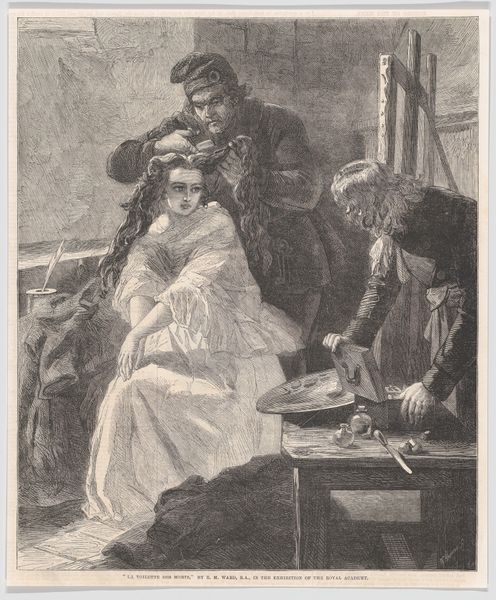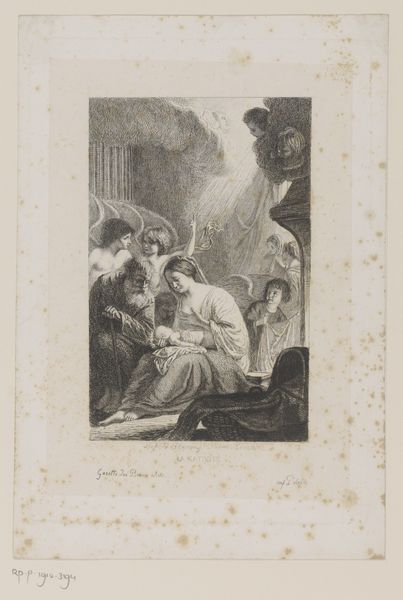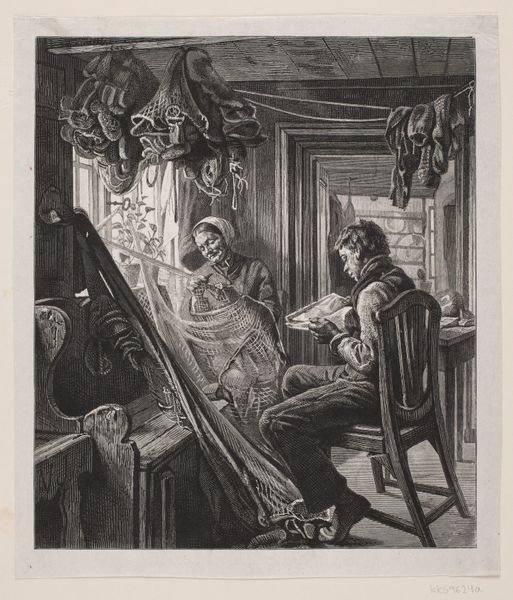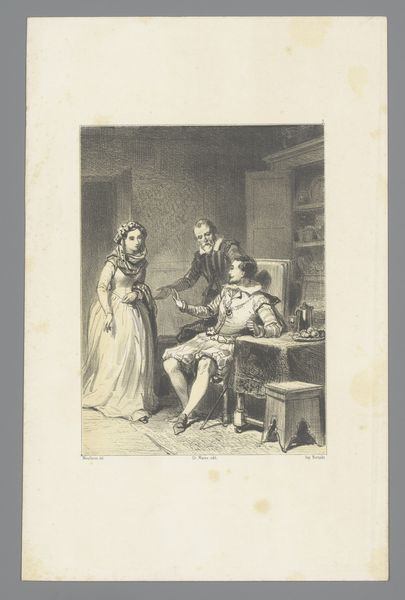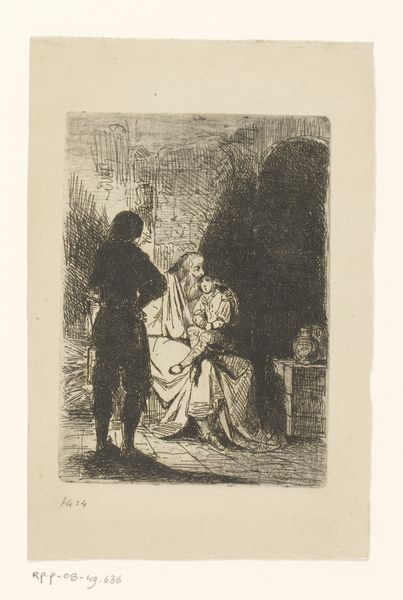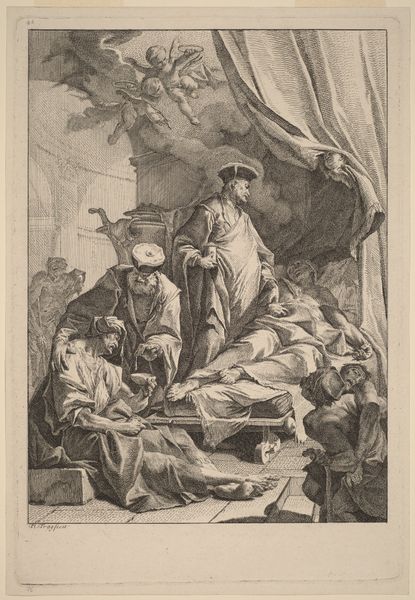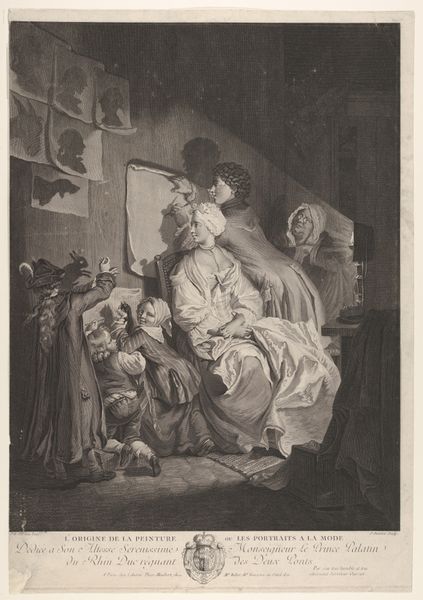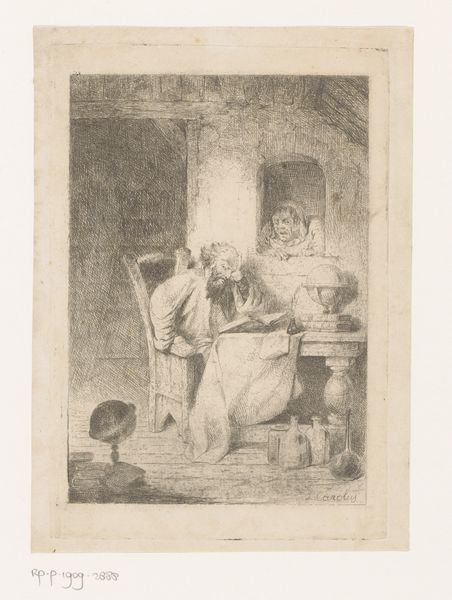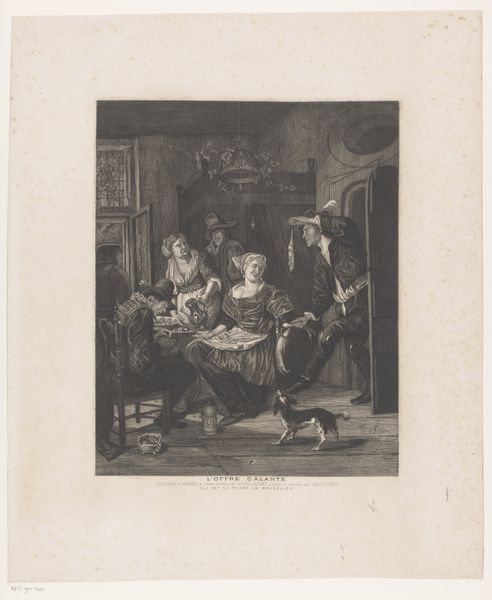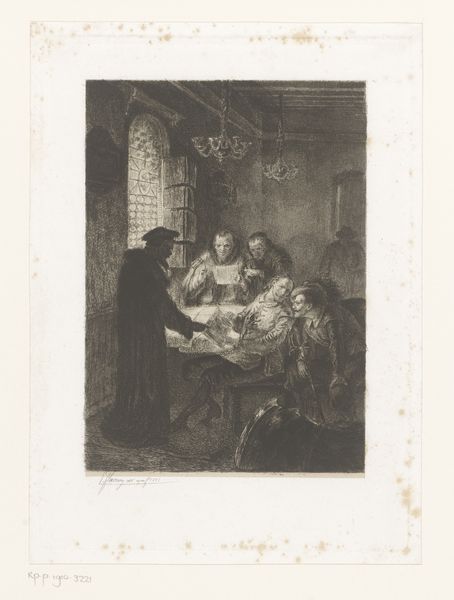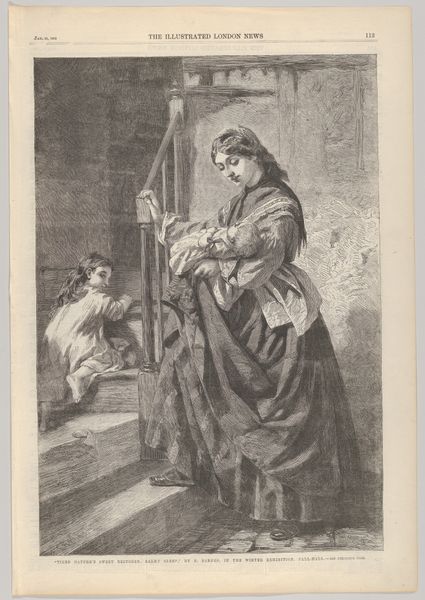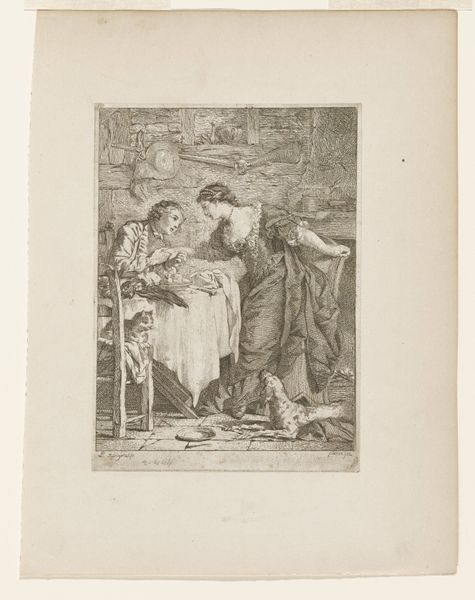
drawing, print
#
portrait
#
drawing
#
narrative-art
# print
#
men
#
history-painting
Dimensions: Sheet: 13 3/4 × 9 9/16 in. (35 × 24.3 cm)
Copyright: Public Domain
Curator: Today, we are examining "The Last Toilet of Charlotte Corday," an 1869 print made by Lumb Stocks, currently held at the Metropolitan Museum. The scene depicts Corday preparing for her execution. What's your initial take? Editor: Strikingly somber. The high contrast within a small tonal range heightens the claustrophobia, the detail pulls me in. I note the composition's emphasis on angular forms— the severe planes and strong verticals emphasize constraint. The woman is serene. It is strange, how that calm is captured here, in the shadow of violent history. Curator: Indeed. Stocks crafted this piece during a period of intense historical reflection in France. Corday, a figure who assassinated Jean-Paul Marat during the French Revolution, was romanticized by some as a patriot. The print reflects the socio-political debates surrounding violence and revolutionary action. The artist uses a technique of engraving and etching that renders fine details. Note how texture of the rough prison environment juxtaposes the smoothness of Charlotte’s attire, heightening the tension between impending death and beauty. Editor: Let's consider the narrative implications. "Toilet," in this context, refers to the act of grooming, but carries immense weight given her circumstances. The quiet intensity with which the barber arranges her hair invites meditation on mortality. Moreover, consider the visual rhyme of her bound hair against the barred door. It is the symbolism of constrained female action; the picture itself stages that very dynamic. The almost ghostly quality created by the print’s tonality certainly contributes to this atmosphere. Curator: I concur, but I see a wider symbolic use for that technique in play here. Lumb Stock's skilled printmaking translates the drama, framing the individual within a broader social fabric of upheaval and moral questions. How does one reconcile individual liberty with the brutal machinery of revolution? This print refuses any easy answer, making it valuable social commentary. Editor: Ultimately, I think it's this visual contradiction—beauty in captivity, serenity before death—that lingers most strongly. It compels reflection on history's complex judgment. Curator: Precisely, a poignant work, encouraging continued conversations, bridging aesthetics and profound historical moments.
Comments
No comments
Be the first to comment and join the conversation on the ultimate creative platform.
